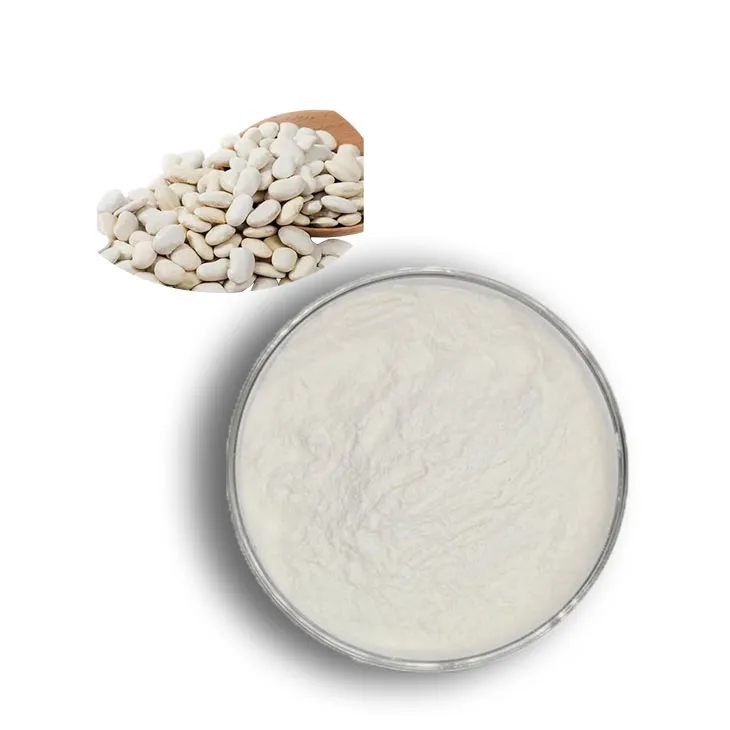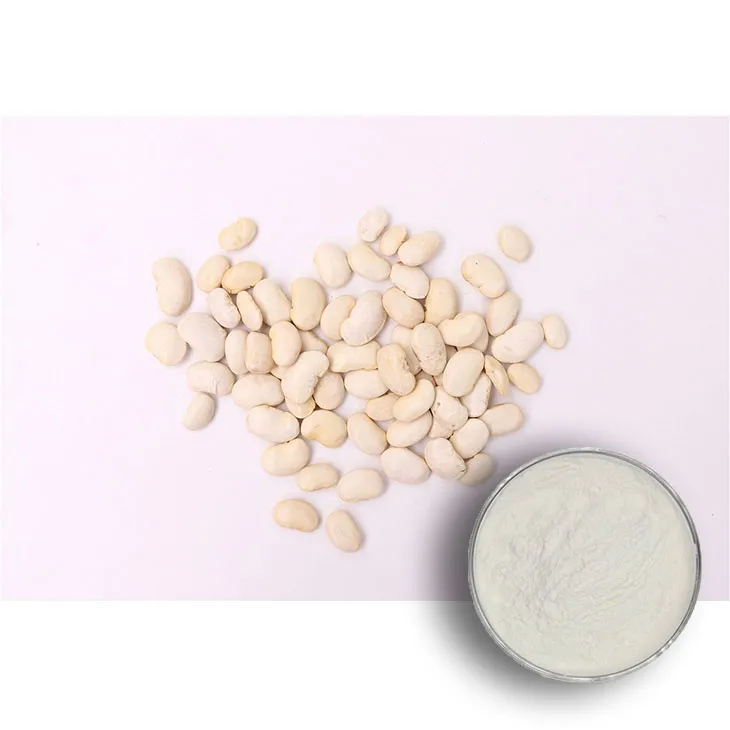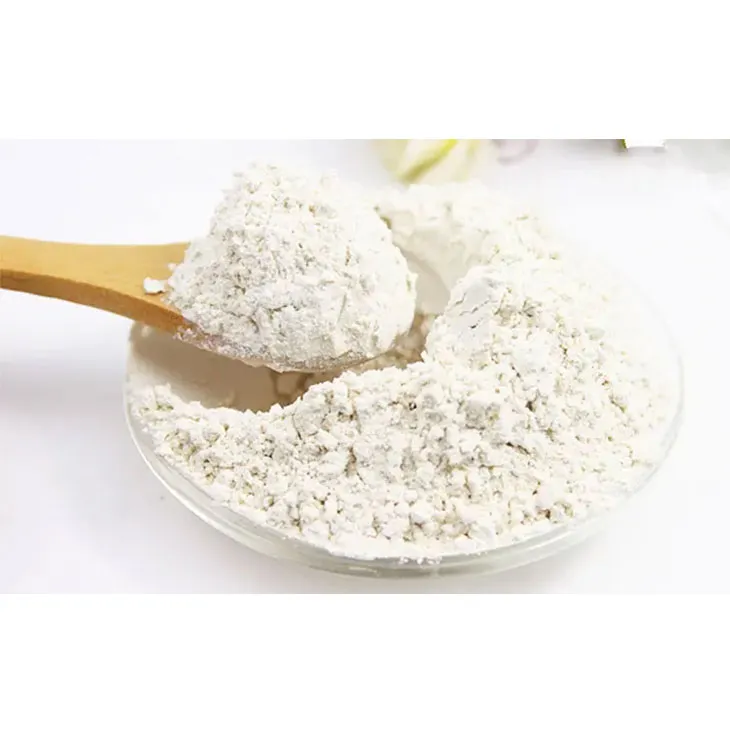- 0086-571-85302990
- sales@greenskybio.com
Extraction Technology and Production Process of Kidney Bean Extract.
2024-11-30

1. Introduction
The yam bean, a plant with various potential benefits, has gained significant attention in recent years. Yam bean extract is being increasingly used in different industries such as food, pharmaceuticals, and cosmetics. Understanding the extraction technology and production process of yam bean extract is crucial for maximizing its potential applications. This article aims to provide a comprehensive overview of these aspects.

2. Modern Extraction Technologies
2.1 Ultrasonic Extraction
Ultrasonic extraction is one of the most efficient and environmentally friendly extraction methods for yam bean extract. It utilizes ultrasonic waves to disrupt the cell walls of the yam bean, facilitating the release of the desired compounds. During the ultrasonic extraction process, the high - frequency sound waves create cavitation bubbles in the solvent. When these bubbles collapse, they generate intense local pressure and temperature changes. This mechanical effect helps to break down the cell structure of the yam bean material, allowing the active components to be more easily dissolved in the solvent.
The advantages of ultrasonic extraction are numerous. Firstly, it can significantly reduce the extraction time compared to traditional extraction methods. For example, in some cases, it can shorten the extraction process from several hours to just a few minutes. Secondly, it can improve the extraction yield. The intense mechanical action of the ultrasonic waves can enhance the mass transfer between the yam bean and the solvent, leading to a higher amount of the extract being obtained. Moreover, ultrasonic extraction requires less solvent, which is not only cost - effective but also more environmentally friendly.
2.2 Solvent Extraction
Solvent extraction is another commonly used method for obtaining yam bean extract. Different solvents can be selected based on the solubility of the target compounds in the yam bean. For example, ethanol is a popular solvent due to its relatively good solubility for many bioactive compounds and its safety for subsequent applications. In solvent extraction, the yam bean material is soaked in the solvent for a certain period of time. During this process, the soluble components in the yam bean gradually dissolve in the solvent.
However, solvent extraction also has some limitations. One of the main challenges is the selection of the appropriate solvent. The wrong solvent may not be able to effectively extract the desired compounds or may introduce impurities. Additionally, solvent extraction usually requires a relatively long extraction time and a large amount of solvent, which may increase the production cost and have potential environmental impacts.
2.3 Supercritical Fluid Extraction
Supercritical fluid extraction (SFE) is a relatively advanced extraction technology. In this method, a supercritical fluid, often carbon dioxide (CO₂), is used as the extracting agent. CO₂ becomes supercritical at certain pressure and temperature conditions. Supercritical CO₂ has properties similar to both gases and liquids, such as high diffusivity and low viscosity like a gas, and good solubility like a liquid.
The advantages of SFE are evident. It can provide a high - purity extract because supercritical CO₂ can be easily removed from the extract after extraction, leaving no solvent residue. It also has a relatively mild extraction condition, which is beneficial for the extraction of thermally sensitive compounds in the yam bean. However, the equipment for supercritical fluid extraction is relatively expensive, which may limit its widespread application in small - scale production.

3. Production Process Step - by - Step
3.1 Pretreatment of Yam Bean
The first step in the production process of yam bean extract is the pretreatment of the yam bean. This includes cleaning the yam beans to remove dirt, stones, and other impurities. After cleaning, the yam beans are usually dried to a certain moisture content. Drying can be carried out using natural drying methods such as sun - drying or by using mechanical drying equipment. The appropriate drying temperature and time need to be carefully controlled to avoid affecting the quality of the yam beans.
Once dried, the yam beans may need to be ground into a powder or small particles. Grinding can increase the surface area of the yam bean material, which is beneficial for the subsequent extraction process. The particle size of the ground yam bean should be optimized according to the extraction method used. For example, in ultrasonic extraction, a relatively fine particle size may be more favorable for better extraction efficiency.
3.2 Extraction Conditions Optimization
Optimizing the extraction conditions is crucial for obtaining a high - quality yam bean extract. Different extraction methods require different optimization strategies.
- For ultrasonic extraction, the factors that need to be optimized include the ultrasonic power, the frequency of the ultrasonic waves, the extraction time, and the ratio of the yam bean material to the solvent. For example, increasing the ultrasonic power within a certain range can enhance the extraction efficiency, but excessive power may cause damage to the active components. The extraction time also needs to be balanced. Too short a time may result in incomplete extraction, while too long a time may lead to the extraction of unwanted impurities.
- In solvent extraction, the key factors to be optimized are the type of solvent, the solvent concentration, the extraction temperature, and the extraction time. As mentioned earlier, the choice of solvent is very important. The solvent concentration can also affect the extraction yield. Higher solvent concentrations may increase the extraction yield to a certain extent, but may also introduce more impurities. The extraction temperature and time need to be adjusted according to the characteristics of the yam bean and the solvent.
- For supercritical fluid extraction, the main parameters to be optimized are the pressure, the temperature, and the flow rate of the supercritical fluid. These parameters directly affect the solubility of the target compounds in the supercritical fluid and the extraction efficiency.
3.3 Separation of Impurities
After the extraction process, the obtained extract usually contains impurities. Separating these impurities is an important step in the production process of yam bean extract.
- Filtration is a common method for removing solid impurities. A filter with an appropriate pore size can be used to filter out particles such as undissolved yam bean residues. For example, a filter paper or a membrane filter can be employed depending on the size of the impurities.
- Centrifugation can also be used to separate impurities. By applying centrifugal force, heavier impurities can be separated from the extract. This method is particularly useful for separating emulsions or small particles that are difficult to filter.
- For some soluble impurities, chromatography techniques can be applied. For example, column chromatography can be used to separate different components in the extract based on their different affinities for the stationary phase and the mobile phase. This can effectively purify the yam bean extract and remove unwanted soluble impurities.
3.4 Concentration and Drying
After separating the impurities, the extract may need to be concentrated to increase the content of the active components. Concentration can be achieved by methods such as evaporation under reduced pressure. This method can remove a large amount of the solvent, leaving a more concentrated extract.
Subsequently, drying is carried out to obtain a dry yam bean extract powder. Drying methods such as spray drying or freeze - drying can be used. Spray drying is a relatively fast and cost - effective method, which can produce a fine powder with good flowability. Freeze - drying, on the other hand, can better preserve the activity of the active components, but it is more expensive and time - consuming.
3.5 Packaging
The final step in the production process of yam bean extract is packaging. The packaging material should be selected based on the properties of the extract and its intended use.
- For extracts intended for short - term use or for use in relatively stable environments, plastic packaging such as polyethylene or polypropylene bags may be sufficient. These materials are relatively inexpensive and can provide a certain degree of protection against moisture and light.
- However, for extracts that are more sensitive to environmental factors such as oxygen, light, or moisture, more advanced packaging materials such as laminated aluminum foil bags or glass bottles may be required. Laminated aluminum foil bags can effectively block oxygen and light, while glass bottles can provide better protection against chemical reactions and are suitable for extracts that need to be stored for a long time.

4. Conclusion
The extraction technology and production process of yam bean extract are complex but crucial for obtaining a high - quality product. Modern extraction technologies such as ultrasonic extraction, solvent extraction, and supercritical fluid extraction each have their own advantages and limitations. The production process, from pretreatment to packaging, requires careful control of each step to ensure the purity, activity, and stability of the yam bean extract. This article provides a comprehensive overview for researchers, manufacturers, and entrepreneurs involved in the yam bean extract - related business, helping them to better understand and optimize the extraction and production processes.

FAQ:
What are the main advantages of ultrasonic extraction in yam bean extract production?
Ultrasonic extraction in yam bean extract production has several main advantages. Firstly, it is highly efficient. The ultrasonic waves can accelerate the mass transfer process, which means that the active components in yam bean can be extracted more quickly compared to traditional extraction methods. Secondly, it is environmentally friendly. It often requires less solvent usage as the ultrasonic waves can enhance the extraction efficiency at a relatively lower solvent volume. This not only reduces the consumption of solvents but also decreases the potential environmental pollution caused by solvent waste.
How to optimize the extraction conditions in the production process of yam bean extract?
To optimize the extraction conditions for yam bean extract, several factors need to be considered. The choice of solvent is crucial. Different solvents have different solubilities for the active components in yam bean, so an appropriate solvent that can effectively dissolve the desired compounds should be selected. Temperature also plays an important role. Generally, an appropriate increase in temperature can enhance the extraction efficiency, but it should not be too high to avoid the degradation of active components. The extraction time needs to be optimized as well. Too short a time may result in incomplete extraction, while too long a time may lead to the extraction of unwanted impurities. Additionally, the ratio of yam bean material to solvent should be adjusted to ensure the maximum extraction of active components while minimizing waste.
What methods are used to separate impurities during the production of yam bean extract?
There are several methods to separate impurities during the production of yam bean extract. Filtration is a common method. It can remove large - particle impurities such as insoluble solids in the extract solution. Centrifugation is also widely used. By spinning the extract at high speed, the denser impurities can be separated from the extract based on the difference in density. Another method is chromatography, which can be used to separate impurities based on the different affinities of the components in the extract to the stationary and mobile phases. For example, column chromatography can be used to purify the yam bean extract by selectively retaining impurities while allowing the desired active components to pass through.
What are the key considerations in the packaging of yam bean extract?
The key considerations in the packaging of yam bean extract include protection from environmental factors. The packaging material should be able to prevent moisture, oxygen, and light from affecting the quality of the extract. For example, using opaque and air - tight packaging can protect the extract from light - induced degradation and oxidation. Another consideration is the type of packaging suitable for different forms of the extract, whether it is in powder or liquid form. For powder extracts, packaging that can prevent caking and maintain the stability of the powder is important. In addition, the packaging should comply with relevant regulations regarding food or pharmaceutical products if the yam bean extract is intended for such applications.
How can manufacturers ensure the quality control in the production of yam bean extract?
Manufacturers can ensure quality control in the production of yam bean extract in multiple ways. Firstly, strict raw material inspection should be carried out. Only high - quality yam beans should be used, and any contaminated or deteriorated raw materials should be rejected. During the production process, parameters such as extraction conditions (temperature, time, solvent ratio) should be closely monitored and controlled to ensure consistent production. Quality testing at different stages of production is also essential. This includes testing for the content of active components, purity, and the absence of harmful substances. Finally, proper storage and transportation conditions should be maintained to prevent quality deterioration of the finished product.
Related literature
- Advances in Natural Product Extraction Technologies for Yam - related Plants"
- "Optimization of Yam Bean Extract Production: A Comprehensive Review"
- "Quality Control in the Production of Botanical Extracts: Focus on Yam Bean"
- ▶ Hesperidin
- ▶ citrus bioflavonoids
- ▶ plant extract
- ▶ lycopene
- ▶ Diosmin
- ▶ Grape seed extract
- ▶ Sea buckthorn Juice Powder
- ▶ Beetroot powder
- ▶ Hops Extract
- ▶ Artichoke Extract
- ▶ Reishi mushroom extract
- ▶ Astaxanthin
- ▶ Green Tea Extract
- ▶ Curcumin Extract
- ▶ Horse Chestnut Extract
- ▶ Other Problems
- ▶ Boswellia Serrata Extract
- ▶ Resveratrol Extract
- ▶ Marigold Extract
- ▶ Grape Leaf Extract
- ▶ blog3
- ▶ blog4
-
The best - quality feverfew extract.
2024-11-30
-
The best organic aged garlic extract.
2024-11-30
-
Konjac flour manufacturers from China.
2024-11-30
-
Certified organic comfrey extract.
2024-11-30
-
The best sophora japonica extract in 2024.
2024-11-30
-
Black Rice Extract Manufacturers from China.
2024-11-30
-
Nature's Bounty Rhodiola Root Extract.
2024-11-30
-
Peppermint oil manufacturers from China.
2024-11-30
-
Hesperidin
2024-11-30
-
Camu Camu Extract
2024-11-30
-
Almond Extract Powder
2024-11-30
-
Soy Extract
2024-11-30
-
Red Date Extract
2024-11-30
-
White Willow Bark Extract
2024-11-30
-
Europen Bilberry Extract
2024-11-30
-
Rosemary extract
2024-11-30
-
Bayberry Extract
2024-11-30
-
Peppermint Extract Powder
2024-11-30





















